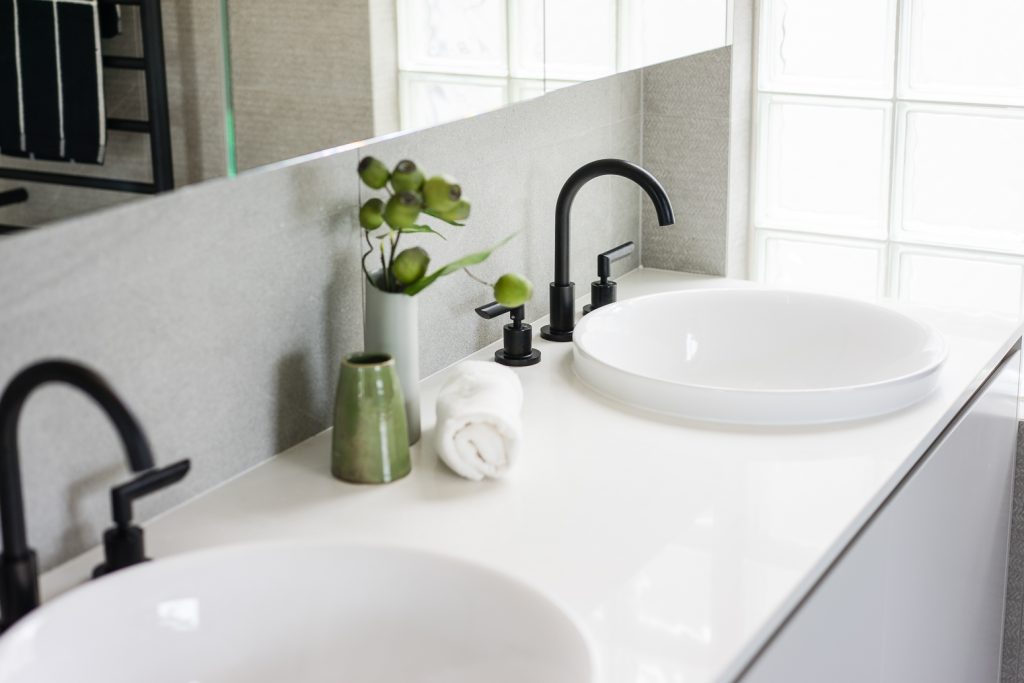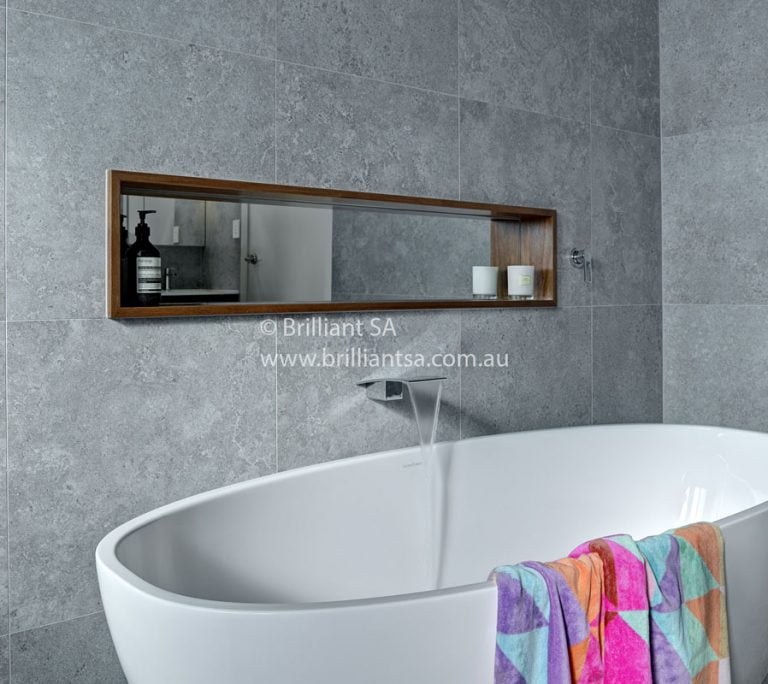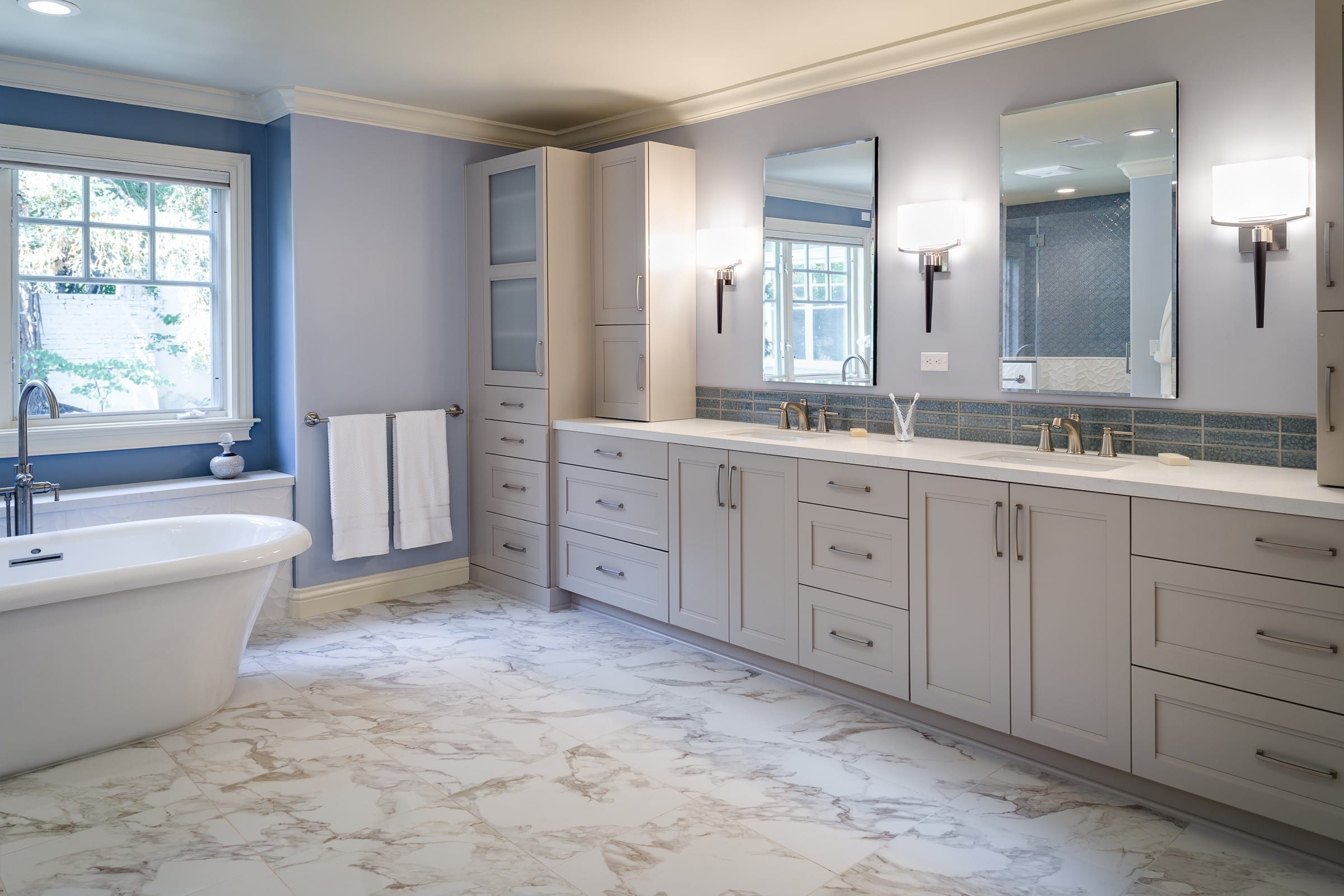Award-Winning Bathroom Design Trends of 2016: Bathroom Design Awards 2016

The 2016 Bathroom Design Awards showcased a range of innovative and stylish bathroom designs that reflected the evolving preferences of homeowners. These award-winning bathrooms exemplified the key trends that defined the year’s most sought-after bathroom styles.
Minimalism and Functionality
Minimalism continued to be a dominant force in bathroom design, emphasizing clean lines, uncluttered spaces, and a focus on functionality. Award-winning bathrooms often featured sleek fixtures, simple color palettes, and open layouts that maximized space and created a sense of tranquility.
Smart Technology Integration
The integration of smart technology in bathrooms was another prominent trend in 2016. Award-winning designs often incorporated features like touch-screen controls for lighting and temperature, voice-activated faucets, and automated toilet systems. These technologies enhanced user experience and provided a modern, futuristic touch.
Natural Materials and Textures
The use of natural materials and textures was a key element in creating a sense of warmth and authenticity in award-winning bathrooms. Stone, wood, and bamboo were popular choices for flooring, countertops, and vanities. These materials brought a touch of nature indoors, creating a calming and inviting atmosphere.
Statement Lighting
Award-winning bathrooms often featured statement lighting that served as both functional and decorative elements. Unique chandeliers, pendant lights, and wall sconces added a touch of elegance and drama to the space. Lighting played a crucial role in highlighting architectural details and creating a warm, inviting ambiance.
Spa-Inspired Retreats
The desire to create a spa-like experience in the home was reflected in many award-winning bathroom designs. Features like freestanding tubs, steam showers, and aromatherapy diffusers transformed bathrooms into tranquil oases for relaxation and rejuvenation. The use of calming color palettes, soft lighting, and luxurious finishes further enhanced the spa-like atmosphere.
Innovative Materials and Technologies in Bathroom Design

The 2016 bathroom design awards showcased a remarkable evolution in the use of materials and technologies, pushing the boundaries of functionality, aesthetics, and sustainability. This year’s winning designs embraced cutting-edge materials and incorporated innovative technologies to create spaces that are both beautiful and highly functional.
Materials
Innovative materials have played a significant role in transforming bathroom design. These materials offer unique properties that enhance durability, water resistance, and aesthetic appeal.
- Quartz Surfaces: Quartz surfaces, such as Caesarstone and Silestone, are non-porous and highly resistant to scratches, stains, and heat. They offer a wide range of colors and patterns, mimicking the look of natural stone. Quartz surfaces are an excellent choice for bathroom countertops, vanities, and shower walls.
- Solid Surface Materials: Solid surface materials, such as Corian and Staron, are non-porous and seamless, making them ideal for bathroom surfaces. They are easy to clean and maintain, and they can be fabricated into custom shapes and designs. Solid surface materials are often used for countertops, sinks, and shower walls.
- Ceramic Tiles: Ceramic tiles continue to be a popular choice for bathroom walls and floors. Advances in manufacturing have led to the development of larger tiles, intricate patterns, and innovative finishes, such as wood-look and metallic effects. These advancements allow for greater design flexibility and create visually stunning spaces.
- Natural Stone: Natural stone, such as marble, granite, and limestone, continues to be a popular choice for bathroom surfaces, adding a touch of elegance and sophistication. Natural stone is durable and resistant to heat and scratches, but it requires regular sealing and maintenance.
- Recycled Materials: The use of recycled materials in bathroom design is increasing, as designers seek to create sustainable and environmentally friendly spaces. Recycled glass, plastic, and wood are being incorporated into bathroom fixtures, tiles, and other materials.
Technologies
Innovative technologies have revolutionized bathroom design, enhancing functionality, comfort, and user experience.
- Smart Toilets: Smart toilets offer a range of features, such as automatic flushing, heated seats, and integrated bidets. They also include advanced features like self-cleaning functions and personalized settings. Smart toilets are becoming increasingly popular as they enhance comfort and hygiene.
- Touchless Faucets: Touchless faucets are activated by motion sensors, eliminating the need to touch the faucet handle. This technology promotes hygiene and reduces the spread of germs. Touchless faucets are available in various styles and finishes to complement any bathroom design.
- Digital Shower Systems: Digital shower systems allow users to control water temperature, flow rate, and even music with a digital interface. They offer precise temperature control and multiple spray settings, creating a luxurious and customizable showering experience.
- Steam Showers: Steam showers provide a relaxing and therapeutic experience. They create a spa-like environment by generating steam, which can help to improve circulation and alleviate respiratory problems. Steam showers are available in various sizes and designs to fit any bathroom.
- Underfloor Heating: Underfloor heating systems provide a comfortable and even heating solution for bathrooms. They are discreetly installed beneath the floor and radiate heat throughout the space, creating a warm and inviting atmosphere.
Impact on Bathroom Functionality and Aesthetics
The innovative materials and technologies discussed above have a significant impact on bathroom functionality and aesthetics.
- Enhanced Functionality: Smart toilets, touchless faucets, and digital shower systems enhance bathroom functionality by providing greater convenience, comfort, and hygiene.
- Improved Aesthetics: Innovative materials, such as quartz surfaces, solid surface materials, and ceramic tiles with intricate patterns and finishes, create visually stunning spaces. These materials offer a wide range of colors, textures, and designs to complement any bathroom style.
- Increased Sustainability: The use of recycled materials and energy-efficient technologies, such as underfloor heating, contributes to a more sustainable bathroom design.
Innovative Materials and Technologies Table
| Material/Technology | Application | Advantages |
|---|---|---|
| Quartz Surfaces | Countertops, vanities, shower walls | Non-porous, scratch-resistant, stain-resistant, heat-resistant, wide range of colors and patterns |
| Solid Surface Materials | Countertops, sinks, shower walls | Non-porous, seamless, easy to clean and maintain, customizable shapes and designs |
| Ceramic Tiles | Walls, floors | Durable, water-resistant, wide range of colors, patterns, and finishes |
| Natural Stone | Countertops, floors, walls | Durable, heat-resistant, scratch-resistant, elegant and sophisticated |
| Recycled Materials | Fixtures, tiles, other materials | Sustainable, environmentally friendly |
| Smart Toilets | Toilets | Automatic flushing, heated seats, integrated bidets, self-cleaning functions, personalized settings |
| Touchless Faucets | Sinks | Motion-activated, hygienic, reduces germ spread |
| Digital Shower Systems | Showers | Precise temperature control, multiple spray settings, customizable experience |
| Steam Showers | Showers | Relaxing and therapeutic, spa-like environment, improves circulation, alleviates respiratory problems |
| Underfloor Heating | Floors | Comfortable, even heating, warm and inviting atmosphere |
Design Principles and Considerations for Award-Winning Bathrooms

The success of award-winning bathrooms stems from a thoughtful integration of design principles that prioritize functionality, aesthetics, sustainability, and accessibility. These principles are not merely stylistic choices but rather fundamental elements that elevate the bathroom experience.
Functionality
Functionality is paramount in bathroom design, ensuring that the space is efficient, practical, and user-friendly. Award-winning bathrooms often demonstrate a meticulous attention to detail in this regard.
- Optimized Layout: Award-winning bathrooms prioritize efficient layouts that maximize space utilization. This includes strategic placement of fixtures, storage solutions, and circulation paths. The goal is to create a seamless flow and avoid cramped or cluttered areas.
- Ergonomics: The design incorporates ergonomic principles, considering the user’s comfort and ease of use. This includes features such as adjustable showerheads, comfortable seating heights, and accessible storage solutions. The bathroom should be a space where individuals can move freely and perform their tasks with ease.
- Smart Technology: Award-winning bathrooms often integrate smart technology to enhance functionality. This can include features like automated lighting, touchless faucets, and digital shower controls, offering convenience and energy efficiency.
Aesthetics, Bathroom design awards 2016
Beyond functionality, award-winning bathrooms excel in their aesthetic appeal. They create a sense of tranquility, luxury, and visual harmony.
- Color Palettes: Award-winning bathrooms often feature carefully chosen color palettes that evoke a sense of calm and sophistication. Neutral colors like white, gray, and beige provide a timeless backdrop, while pops of color can be introduced through accents like towels, rugs, or artwork. The color scheme should complement the overall design and create a cohesive aesthetic.
- Material Selection: The choice of materials plays a crucial role in creating a visually appealing bathroom. Award-winning designs often incorporate high-quality materials like natural stone, wood, and metal, which add a touch of elegance and durability. The textures and finishes of these materials can further enhance the overall aesthetic.
- Lighting: Lighting is an essential aspect of bathroom design, as it can dramatically impact the mood and atmosphere. Award-winning bathrooms often feature multiple lighting sources, including ambient, task, and accent lighting. This allows for flexibility in creating different lighting scenarios, from bright and functional to soft and inviting.
Sustainability
Award-winning bathrooms prioritize sustainable design principles to minimize environmental impact and promote resource conservation.
- Water Efficiency: Award-winning bathrooms often incorporate water-saving fixtures such as low-flow showerheads, dual-flush toilets, and water-efficient faucets. These fixtures significantly reduce water consumption without compromising performance.
- Energy Efficiency: The design incorporates energy-efficient appliances, such as LED lighting and low-energy heating systems. These features contribute to reducing energy consumption and lowering utility bills.
- Material Choice: Sustainable materials, such as recycled glass, bamboo, and reclaimed wood, are often incorporated in award-winning bathrooms. These materials minimize the environmental impact of construction and promote responsible resource management.
Accessibility
Award-winning bathrooms often prioritize accessibility, ensuring that the space is usable and enjoyable for individuals with diverse abilities.
- Universal Design: Award-winning bathrooms often incorporate universal design principles, which aim to create spaces that are accessible and usable by people of all ages and abilities. This includes features such as grab bars, wheelchair-accessible showers, and lever-style faucets.
- Clear Pathways: The design ensures clear pathways for wheelchair users, providing ample space for maneuverability. This includes wider doorways, turning radii, and non-slip flooring.
- Adjustable Features: Award-winning bathrooms often include adjustable features, such as showerheads that can be adjusted in height, mirrors that can be tilted, and adjustable vanities. These features allow individuals to customize the bathroom to their specific needs.
Bathroom design awards 2016 – The 2016 Bathroom Design Awards showcased innovative and stylish spaces, with a focus on functionality and aesthetics. One trend that stood out was the use of chalk paint, which offered a unique way to personalize bathroom surfaces. For those looking to add a touch of vintage charm or a pop of color, chalk paint for bathroom can be a fantastic choice.
Ultimately, the awards highlighted the creativity and artistry that can transform a simple bathroom into a luxurious retreat.
The Bathroom Design Awards 2016 showcased a variety of stunning and innovative bathroom designs, with many incorporating natural materials and elegant aesthetics. One particular trend that stood out was the use of Crema Marfil marble, which added a timeless and sophisticated touch to the spaces.
If you’re looking for inspiration for your own bathroom renovation, explore the beauty and versatility of crema marfil bathroom designs , a design choice that continues to be popular in the world of bathroom design awards.